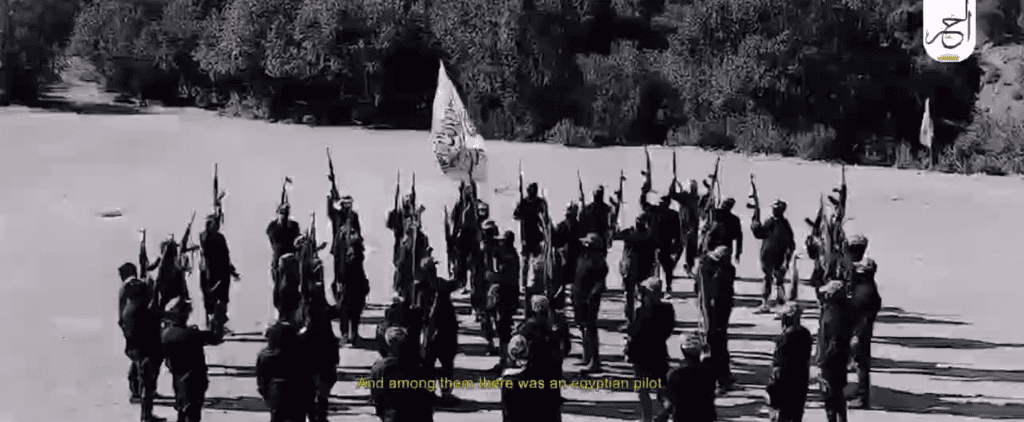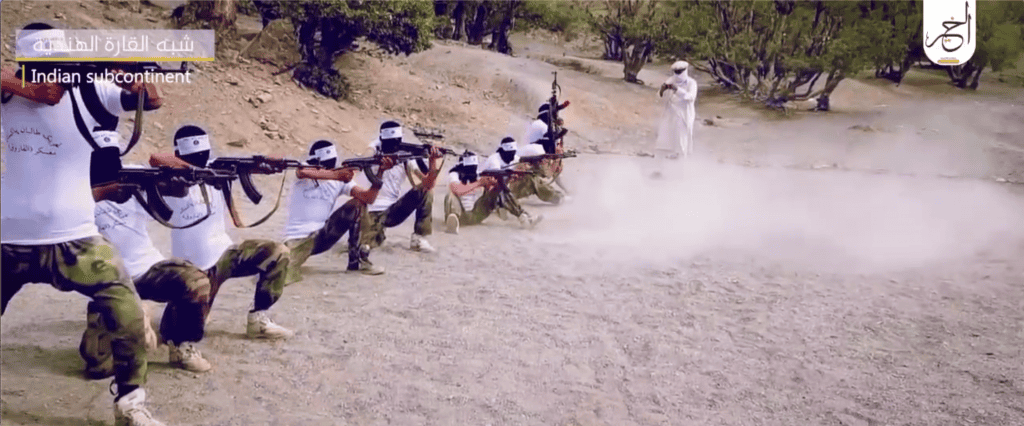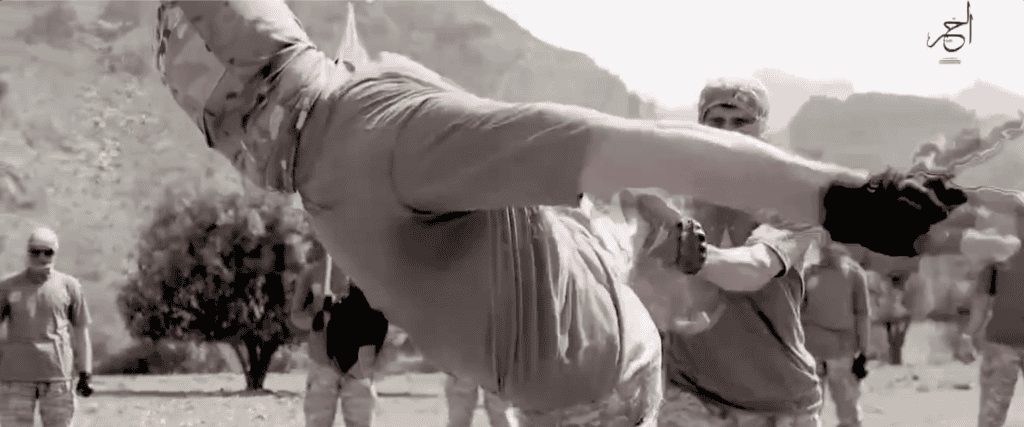
On the 20th anniversary of the 9/11 hijackings, As Sahab, al Qaeda’s main media arm, did not release a video commemorating the attacks. Instead, As Sahab posted a lengthy production in which Ayman al Zawahiri promotes the group’s “Jerusalem Will Not Be Judaized” campaign.
However, a lesser known al Qaeda-affiliated media shop did release a 9/11-themed video on the anniversary of the jihadists’ deadliest day. That outfit, Nasher al Khayr, has produced a steady stream of al Qaeda-related media for months. And its production contains a few noteworthy themes, in addition to the standard fare. The 15-plus minute video includes archival footage of the 9/11 attacks, plus the same reenactment clips used in a recent Taliban video.
The most important motif is “idea development,” specifically how the 9/11 plot evolved over time, relying on different parties to improvise and build on what was initially a much simpler concept.
“The day of Sep 11, 2001 was not an ordinary day for Crusader America,” Nasher al Khayr’s narrator crows. “In that day al Qaeda was able to show the world that they don’t fear the might of American military power.”
The opening montage includes scenes from the Taliban’s special forces training camps in Afghanistan. It is well-known that al Qaeda’s trainers are embedded within the Taliban, but al Qaeda does not advertise its role in providing instruction to the Taliban’s fighters. The al Qaeda-allied Haqqani Network, which is an integral part of the Taliban, also leads thousands of highly-trained fighters. The result is that it is often impossible to distinguish between al Qaeda, Haqqani and Taliban special forces facilities. There is no clear line of demarcation between them.
The footage selected by Nasher al Khayr is specifically intended to place the Taliban’s special forces in the context of al Qaeda’s global campaign. The video’s editors also tie these existing training facilities to al Qaeda’s anti-American terrorism.

The narrator argues that jihadist safe havens were crucial for the development of the 9/11 plot. He contrasts Sudan, the headquarters for Osama bin Laden and al Qaeda throughout the early 1990s, with Taliban-controlled Afghanistan. The former nation, Sudan, was “unable to bear” attacks against the West, whereas Afghanistan could.
“The idea behind the attack of 9/11 was born in Pakistan more precisely in the city of Peshawar [between] 1985 to 1990,” the narrator says. At the time, “the mujahideen from around the world were pouring into the city for entering Afghanistan.”
These mujahideen included an Egyptian pilot and “the seed of the 9/11 attack idea had emerged in his mind.”
Nasher al Khayr’s narrator explains “at that time it was just simple idea of loading a plane with explosives and attacking any American building with it.” But the pilot discussed the plan with Abu Ubaidah al Banshiri, a top deputy to Osama bin Laden who served as al Qaeda’s general military commander until his death in 1996. This conversation allegedly took place before al Qaeda relocated to Sudan in the early 1990s.
Al Banshiri “listened to the idea with passion and quietness without considering it as a plan due to the priorities at that time.” This seemed to be “the end for the idea and the Egyptian brother was unaware that [his] random idea [would] change the course of the history forever by the grace of Allah.”
The narrator claims that al Qaeda “started discussing the plan” with more urgency after moving to Sudan. But they reached “a dead end,” because Sudan “was unable to bear such attacks.”
Much of the rest of the video is a standard retelling of the 9/11 plot, including Khalid Sheikh Mohammed’s role in developing the concept of using planes full of passengers as weapons. Nasher al Khayr’s narrator reiterates that the plot stalled in Sudan, but picked up steam once again, after al Qaeda moved back to Afghanistan.
“Eventually the mujahideen came to Afghanistan” and “reached to the Tora Bora Mountains,” Nasher al Khayr’s man says. “Then the mujahideen leadership led by Sheikh Osama and Ayman [al Zawahiri] started planning the raid practically, not just theoretically.”

FDD’s Long War Journal assesses that the Nasher al Khayr functions much like Thabat, another al Qaeda-affiliated media shop. Thabat isn’t an official media hub like As Sahab, but it has increasingly functioned as one. And the United Nations Analytical Support and Sanctions Monitoring Team has described Thabat as “one of the group’s [al Qaeda’s] media arms.” It may be the case that Nasher al Khayr is run by al Qaeda operatives, but for whatever reason the group hasn’t announced it as a formal media arm.
Nasher al Khayr’s decision to include footage of the Taliban’s special forces was likely no accident. The Taliban itself advertises its suicide squads, which are part of its special forces, and argues that they will continue to play an important role in defending the Islamic Emirate of Afghanistan. In the past, al Qaeda has sought to replicate the 2008 Mumbai terrorist attack across several European cities. It is possible that well-trained, paramilitary fighters could be repurposed for similar missions in the future. New recruits could also be indoctrinated and trained along the same lines.







